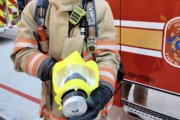WASHINGTON – On Oct. 6, 1976, Cubana de Aviacion Flight 455, bound from Barbados to Jamaica, was bombed. All 78 people on board the Douglas DC-8 aircraft were killed.
It was the deadliest attack of its time in the Western Hemisphere. The bombing was carried about by a Cuban national named Luis Posada Carriles — who later turned out to be a CIA operative — and three other men. They used two bombs made with the highly volatile explosive C-4 stuffed into toothpaste tubes. The 78 people who died included the entire Cuban Olympic fencing team.
U.S. intelligence sources say that was the first known example of such a tactic being used, and it led to the development of many other devices.
The toothpaste-tube method is among those schemes commonly referred to by security experts, such as Fred Burton, as “off the shelf” plots.
“These are plots that you can pull off the shelf to target heads of state or VIPs visiting a city, or they can be used in the aviation arena. Toothpaste tubes and baby dolls, for example, are among a number of different types of devices that disguise improvised explosive devices,” says Burton, vice president of intelligence at Stratfor.
U.S. authorities issued the warning about toothpaste tubes and makeup cases on airliners because of what was characterized as intelligence that indicates airlines headed to Sochi, site of the 2014 Olympics, might be targeted.
The Department of Homeland Security issued a statement saying, “Out of an abundance of caution, DHS regularly shares relevant information with domestic and international partners, including those associated with international events such as the Sochi Olympics.”
“While we are not aware of a specific threat to the homeland at this time, this routine communication is an important part of our commitment to making sure we meet that priority,” a DHS official said.
Ironically, the toothpaste-tube bomb has ties to U.S. intelligence.
According to declassified documents from the Central Intelligence Agency, Posada Carriles had a long relationship with the CIA.
In 1961, Posada Carriles joined the “Brigade 2506,” a CIA-sponsored group of Cuban exiles formed in 1960 to attempt the military overthrow of the Cuban government headed by Fidel Castro and to invade Cuba.
But the ship to which he was assigned never landed at the Bay of Pigs.
Later he served in the U.S. military between 1963 and 1965. During that time, the CIA recruited him and trained him in explosives. He went on to train other paramilitary exile forces.
CIA documents indicated he remained associated with the CIA until June 1976 — just months before the toothpaste tube-bomb was used on Cubana Flight 455.
All 73 passengers, including 57 Cubans, 11 Guyanese and five North Koreans, and the crew of five died in the bombing, which took place 11 minutes after the plane took off from Barbados’ Seawell airport.
The dead included all 24 members of the 1975 national Cuban fencing team that had just won all the gold medals in the Central American and Caribbean Championships. Many of them were teenagers. Among the passengers were several Cuban government officials.
Follow “>WTOP Facebook page.







